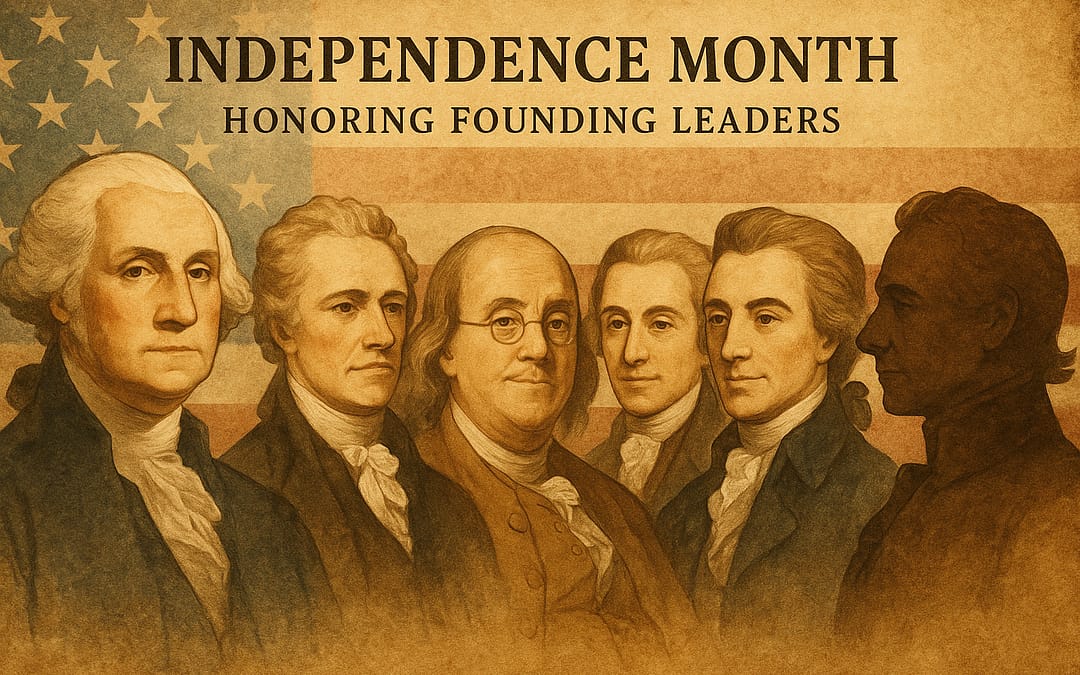During this month in which we celebrate our nation’s independence, we have the opportunity to pay tribute to and learn from those leaders who helped to shape and define that process.
Could we begin with anyone other than George Washington? A man of few words, Washington was known for his calm and assured demeanor. Characterized by a strong work ethic and a focus on achieving practical goals, he preferred to let his actions speak for themselves. Although he presented a commanding physical presence, he treated everyone with respect, regardless of rank, while also holding each person accountable for his actions.
The risk-taker in the group was Alexander Hamilton who sought results and was driven to accomplish his vision. Self-assured and not afraid to make bold decisions, Hamilton was focused on outcomes, even in the face of opposition. However, these same qualities also led him to act impulsively at times, making rash decisions and potentially alienating people versus building consensus.
The “class humanitarian”, committed to demonstrating compassion for others and working to address inequality, was Charles Cornwallis. His strong sense of integrity led him to vote against actions with which he disagreed, but his failure to adapt to change led to his eventual defeat. Our pragmatist is Benjamin Franklin, whose belief in individual responsibility and self-improvement led to his very practical approach to solving problems. As a leader, he championed collaboration and valued the process of collective effort to attain a common goal. Like Cornwallis, Franklin worked toward improving society as a whole, encouraging public service and community involvement, as well as advocating for access to education for all, not just the elite.
Known for his now famous signature, John Hancock utilized his charisma and charm to rise to political success. Although he wielded more wealth and influence than the average Bostonian at that time, he treated people well and related to others as if he were “one of them.” Bridging two cultures, the Marquis de Lafayette was a French military officer who believed so strongly in the values of liberty and equality that he also volunteered to join the American revolution. He sought the input of his soldiers, which developed trust, inspired loyalty and fostered morale. Most importantly, he was able to leverage his evaluated experience to grow and adapt as a leader.
And, last but not least, there is always one “crazy” outlier! That was the General known as “Mad Anthony” Wayne who earned this nickname due to his bravery, fearlessness and often reckless actions in battle. Possessing a fiery temperament, he led from the front with decisive, bold, and often risky, military maneuvers, inspiring and motivating his troops.
What do we take away from these men and their examples? First, that we are all unique individuals with inherent strengths and limitations! There is no single “leadership style” that is “right.” Each person brings his or her own character, values and strengths to the table. The ability to identify, embrace and capitalize on our strengths and talents leads to desirable outcomes when we harness and direct them well. Conversely, those same traits have the potential for negative outcomes which work to our detriment, if not managed wisely. Secondly, there are many ways to lead, from sensible practicality to idealistic visionary, from charismatic charm to “boots on the ground” humanitarian. Find your leadership niche, embrace your innate strengths and develop that leader inside of you! The world needs you!

